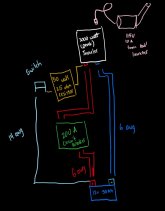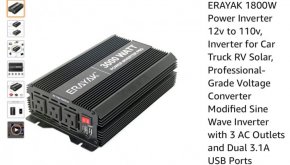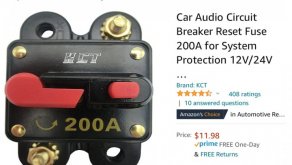His schematic says 12V 50 Ah.
Load is 115V, 10A rated tennis ball launcher. But I hope it doesn't draw 1150W continuously, rather only when shooting a ball at him.
Time for a Kill-a-Watt meter?
12V x 50 Ah = 600 Wh. Is that AGM? If so, use maybe 50% to 80% of capacity. For personal use, a couple to a few hundred cycles should be enough. If commercial, need better. 600 Wh x 80% = 480 Wh usable.
Maybe it'll give an hour of practice, depending on average consumption.
An AGM battery can probably support 1C discharge rate, so 600W output. Due to Peukert effect, won't last an hour at 1C. It can give a high peak current, probably as much as a car starting battery for a few seconds. Not sure what current profile the tennis ball launcher has. I think it is a spinning motor with a wheel to throw the ball, so pretty much continuous no-load current draw I would guess.
Might be better to have a 12V motor. But inverter is an off-the-shelf product.






